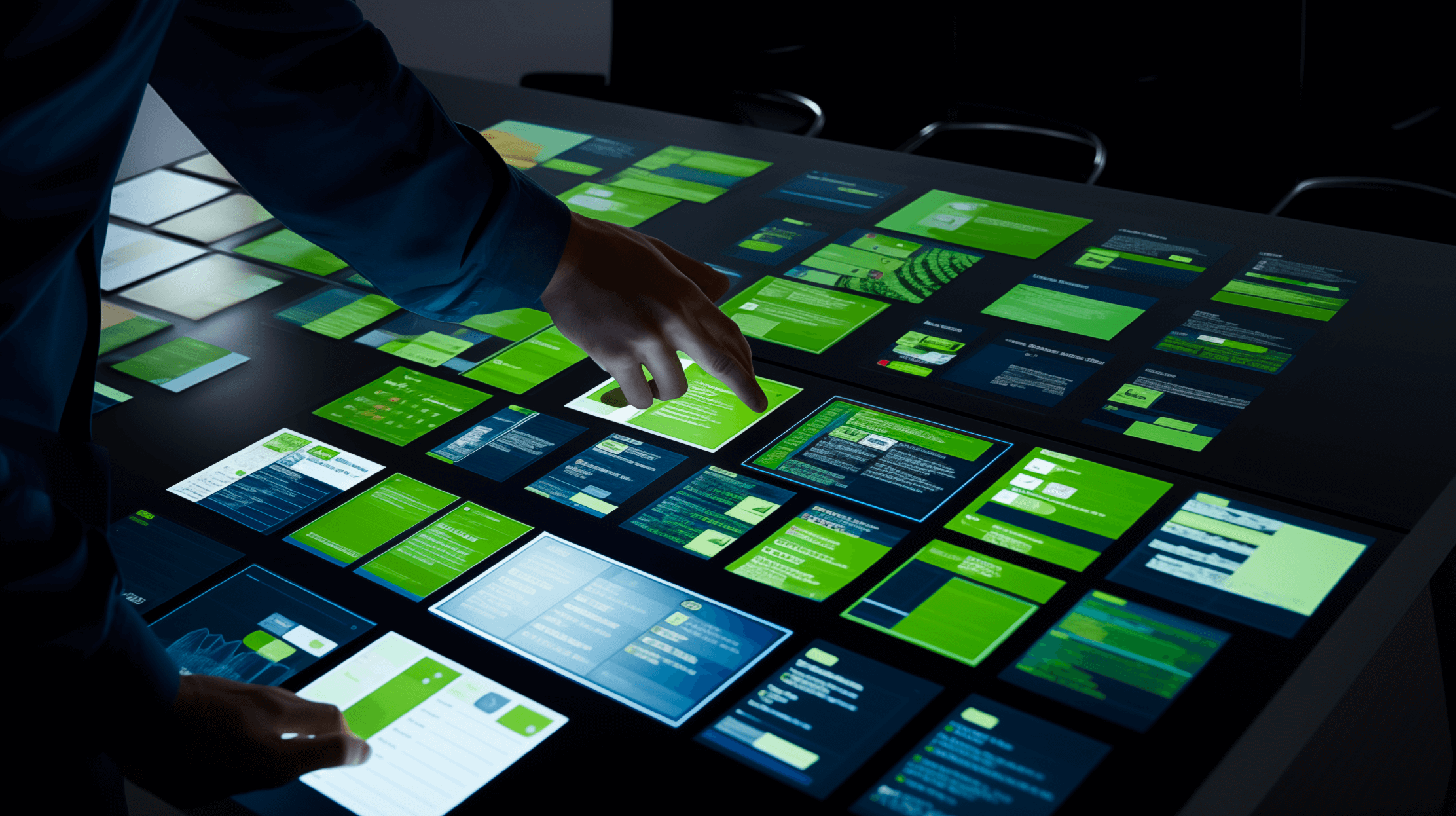7 Lessons from Design School

Graduate school was a transformative experience for me. Especially because I was switching from having earned a business degree in my undergrad, to pursuing an MFA in Graphic Design & Visual Experience from the Savannah College of Art & Design. Another major factor was that this degree was in the United States, the global hub of innovation. Naturally, I felt very out of place when I began and stumbled a bit along the way. I felt like an imposter and questioned my abilities. However, I learned a couple of things along the way that helped me excel in my degree and still help me in my career to this day. I’d like to share them with you so you can implement some of these in your day-to-day practice.
1. Shatter the Creative Ego
First and foremost, let go of your ego. As designers, we are very attached to our work. We spend hours creating something and it hurts when it is rejected or goes to waste. Yes, I know it hurts, but I have news for you. Your ego is what is stopping you from going from good to great to amazing to earth-shattering design skills. Your ego is what stops you from learning and listening. Your ego is what takes every failure to heart and wants to stop there and then.
The feedback is about the work and how you can use it to improve the outcome.
I will acknowledge that I have my own ego as well. It is what drives me to be better. To participate in a little bit of healthy competition. However, over time I have learned how to curb it and know when I can use it to my advantage (i.e. rarely). For the most part, you should be used to taking feedback and critique without making it about yourself. The feedback is about the work and how you can use it to improve the outcome. Be patient with yourself because ego takes a long time to control but know that it is an essential requirement for any designer.
2. Make a habit of failure
This is directly related to my previous point. If you don’t have your ego under control, you will not be able to be comfortable with failure. If you’re not comfortable with failure, you will not be comfortable with bad ideas. This will affect your brainstorming skills, and I promise you won’t come up with amazing ideas if you don’t come up with bad ones.
Make a mess and then you will find a brilliant idea in that very mess.
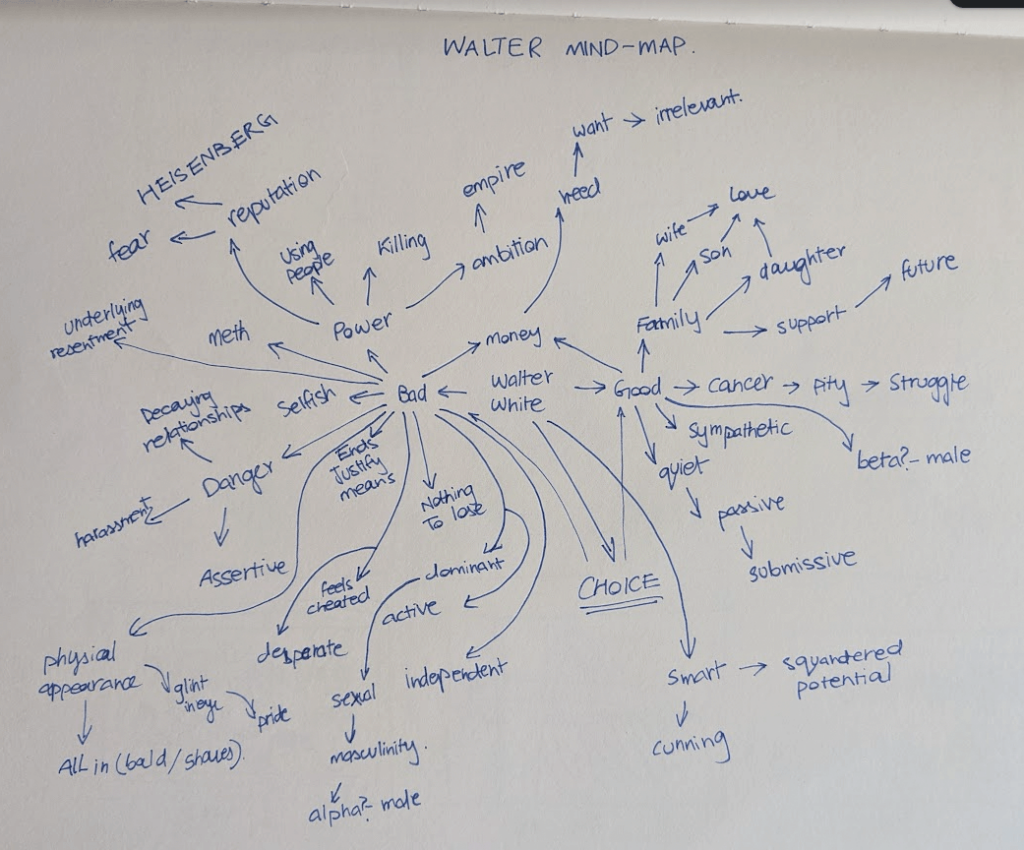
You have to make a habit of failure and treat it as a stepping stone to success rather than an actual outcome. Failure is inevitable. If I cried over every idea that my professors rejected and every piece of work that got thrown in the trash, I would fill an ocean. Instead what you should do is come up with an insane amount of ideas and approaches during the process. For instance, if you are designing a logo, forget 20 sketches. Do 200. Out of these 200 sketches, there will be 190 bad ones. This is what you need to get comfortable with. Make a mess and then you will find a brilliant idea in that very mess.
3. Overdo the research. Soak in it.
At this point, it is commonly known that research is the first step in any design process. Every designer that I interview successfully cites it as the first step in theirs. What varies is the depth to which designers are willing to go in the research phase.
When you feel like you have done enough research, do a little bit more.
Research can include understanding your goals and audience as well as gathering inspiration. My rule of thumb is that when you feel like you have done enough research, do a little bit more. I have seen designers have five images in their mood-board and call that research. Needless to say, that is insufficient. There should be an emphasis on quality as well as quantity. You have to consider if you have enough inspirational material gathered to ensure whether what you’re creating is original or a copy. Steal like an artist is a good resource to learn this skill.
You also have to have a depth of knowledge of the purpose and audience of your project. The what, why, how, who. What do you want to design? Why do you need to design it? How will your audience interact with it? Who is your audience anyway?
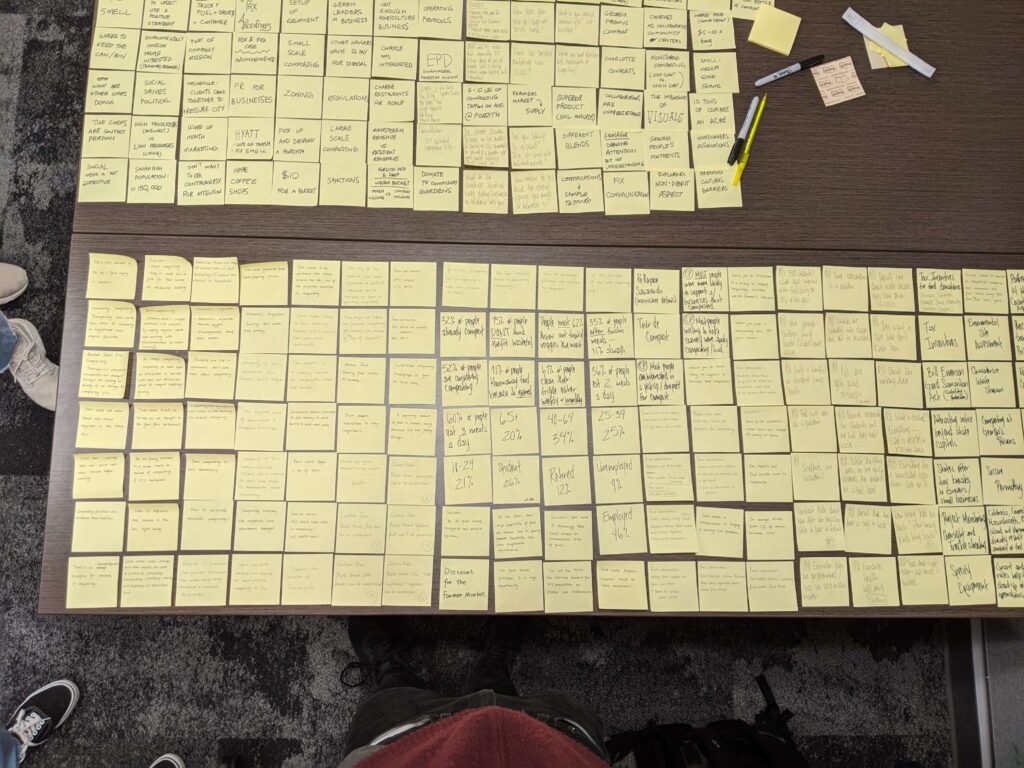
Keep these things in mind to kick off your design process the right way. Answer the foundational questions and keep an emphasis on quality as well as quantity of research.
4. It’s all in the eye
Being a designer, especially a visual designer is all about taste. Knowing what the difference is between bad design and good. As a visual designer, you are more of a curator than an artist. You have a space, and you collect different pieces to fill that space. These pieces can be imagery, typography, iconography, colors, or any combination of those things. Now, it is very important to know if the pieces you are collecting are any good or not. Knowing if a font works, if certain colors work together, and so on.
How does one develop their taste (or should I say, eye)? Time, practice, and feedback from someone who knows better. Sorry, that’s all there is to it. No shortcut.
5. Design is much more than your job
How drab the world would be if all we did was for money. How devoid of color. There would be little, if any art. No major social movements. No one doing creative work just for the heck of it.
In my graduate school, I was told that the history of graphic design began with cave paintings thousands of years ago.
Until a certain point in my journey as a designer, I sincerely believed that making logos, typography, and brand manuals for companies was the end all, be all of graphic design. In graduate school, I was told that the history of graphic design began with cave paintings thousands of years ago. This was mind-blowing for me. It opened my eyes to the expansive possibilities of graphic design. Graphic design was anything visual, made with a purpose in mind. Graffiti was graphic design. Protest posters were graphic design. I realized that graphic design could exist outside the confines of corporate structures.
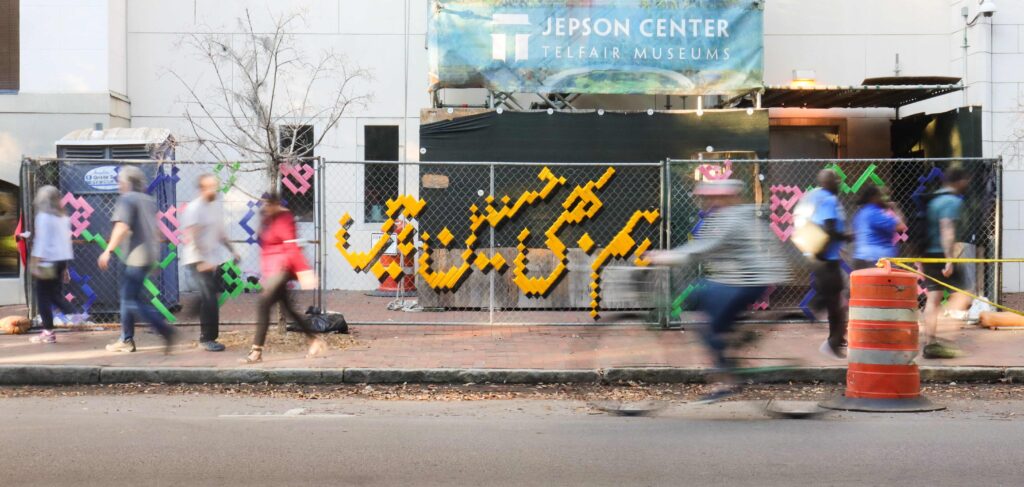
Having that perspective makes loving what you do a lot easier. It helps you think outside the box and outside the pre-existing structures and mediums you work in. It also helps open up the possibilities of what you can create. This idea helped me create the final piece of my thesis, Hum bhi haseen hain: a public Urdu typography piece in the heart of the American South. An attempt to increase the visibility of Pakistani culture to an audience very detached from it.
6. Give Adobe a break
Ever since I started designing, I have associated the field of Graphic Design with Adobe Photoshop and Illustrator and later, Figma. Graphic design and UI/UX Design meant sitting at a computer and pushing pixels to make things look pretty. As my understanding grew, I knew design was a lot more. It was about semiotics, messaging, critical thinking, problem-solving, and all of these other ideas. How do you put that into practice though?
To achieve a higher amount of freedom, use simpler tools.
Leave the computer alone for a bit. The tools you use have a say in what the final product is going to be. To achieve a higher amount of freedom, use simpler tools. The best, in my opinion, is paper and pencil. This is not a revolutionary thought. This was something I was taught by my professors and something I live by. The more complex tool you start with, the faster you start thinking about details. What is important with paper and pencil is you stretch out the ideation phase a little bit and force yourself to come up with a variety of solutions.
Leaving the computer is important in the initial phase of the project, However, it can also help to avoid the usual tools at later stages in the process. Below, you see me cutting up an apple to create typography.
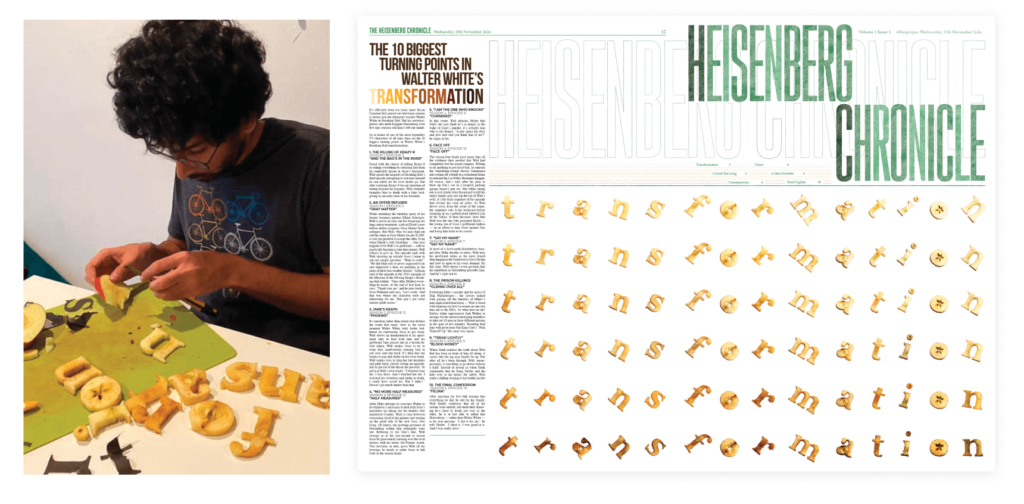
The apple oxidized and I took pictures of it throughout the day. I then combined the images to denote the idea transformation. Yes, I could have spent hours doing photo manipulation but the result would have been less organic, this felt closer to creating a little bit of graphic design magic.
7. Love the work and love yourself
Let me pull back a little bit and talk about a time during my undergrad. I was doing a full-time job, leading design in student societies, and handling my studies. I had no social life and no me-time. I had so much anxiety that I couldn’t breathe properly.
After struggling with it for a few months, I realized I had to drop some things to feel better. I quit my job and reduced my workload significantly. Suddenly, I started breathing properly. Yes, I was afraid of how I would progress my design career but I could not let that fear ruin my mental health.
I have carried this lesson through other challenging times in my life. When I had a difficult job, when I felt out of my element in grad school, and when I had too many freelance projects. It is important to keep a balance and make sure you’re healthy. Only then will you be able to perform your best and be happy with the work you do.
Here are a few things to keep in mind so you can keep a healthy balance:
- You are not your work. You are more than that as a complete human being.
- There is a limit to how much work you can take up and that’s okay.
- Prioritize what’s most important. Drop something if needed.
- Don’t be afraid to make some changes. Take that leap of faith.
I hope these things can help you grow as a designer as they have for me. To learn more about my design process, check out The Secret Recipe of Visual Design.



